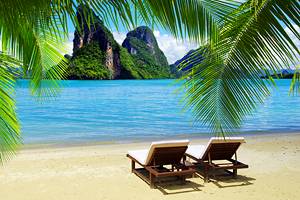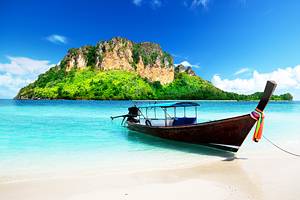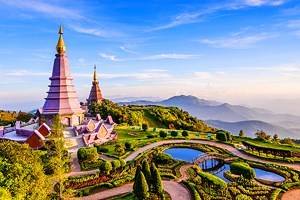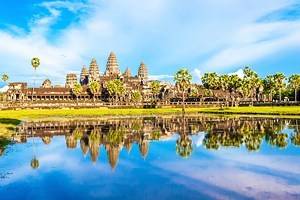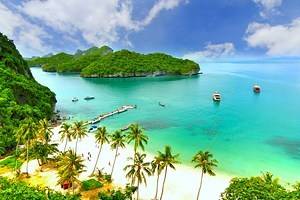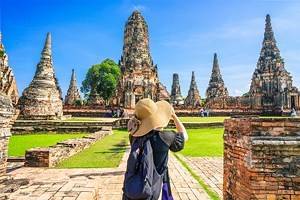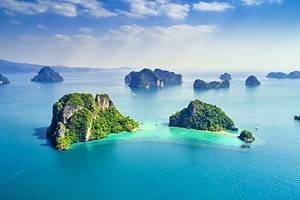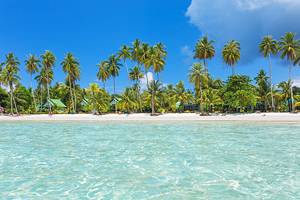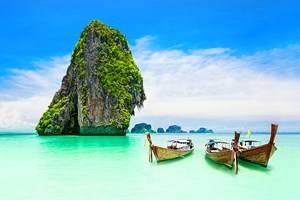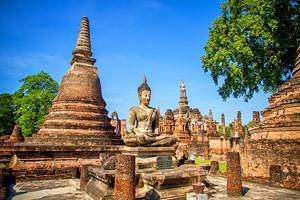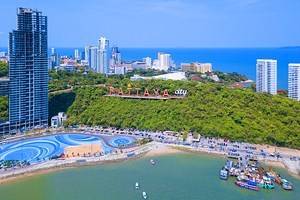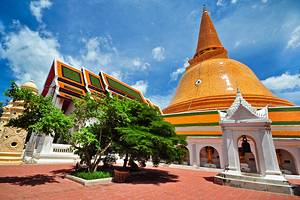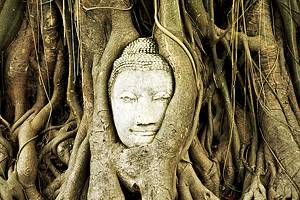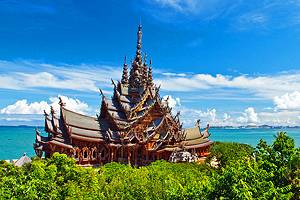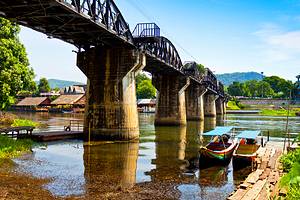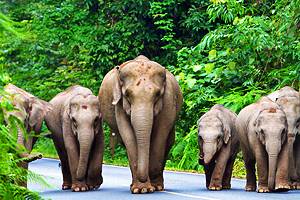Temples in Bangkok
For as modern as Bangkok is, its roots are steeped in centuries-old history and Buddhist culture. In fact, Bangkok is home to over 400 jaw-dropping wats (temples). Some are famous and attract thousands of tourists every day, while others are smaller, less well-known, or simple structures that blend in without the colorful decorations that visitors crave.
Most Thai temples consist of more than just one building, and many are actually part of a complex consisting of a main praying hall surrounded by smaller structures. While the temples make for great photo backgrounds, they also provide a real insight into the history and culture of the nation.
From the very, very old to the most elaborately decorated, and the ones you simply cannot miss, here is our list of the best temples in and around Bangkok.
Wat Pho
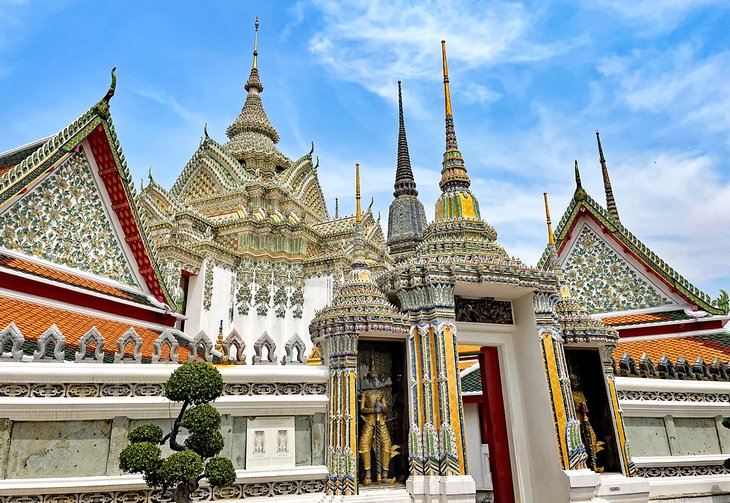
It's easy to feel the power of Wat Pho the minute you enter the temple complex. It is classified as one of the highest grades of temples in Thailand, and it is linked with King Rama I, who made it his main temple. It is believed that some of his ashes rest in the temple complex.
The grounds have one of the largest collections of Buddha images in the kingdom, one of which is the reclining Buddha. Located just minutes away from the Grand Palace, Wat Pho is home to Thailand's largest reclining Buddha. At 46 meters long and 15 meters tall, the golden Buddha (literally covered in gold leaf) feels truly gigantic. The statue is lying on its side, and its body runs nearly the entire length of the hall. The hall where the Buddha resides is covered in colorful murals and lined with 108 bronze bowls.
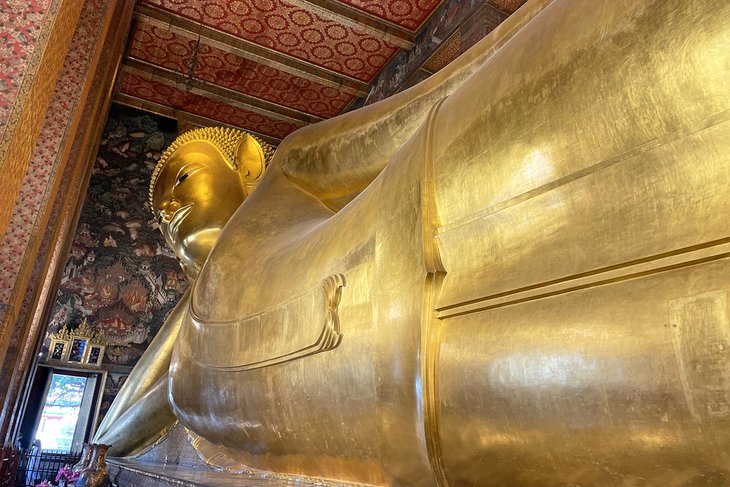
Wat Pho is one of the oldest wats in the country, founded in Bangkok even before the city became the kingdom's capital. And while the hall where the reclining Buddha resides doesn't feel particularly large, the grounds of Wat Pho cover an area of over 80,000 square meters and include a number of chedis (stupas holding relics), praying halls, pavilions, formal gardens, and many life-size stone statues guarding the temple gates.
In addition to the stunning giant Buddha, Wat Pho is well known as the first public university of Thailand. While science and literature are no longer taught here, the temples do run a massage and natural medicine school. For visitors, that means Wat Pho is the perfect place to get a traditional Thai massage.
Among the many ornate structures in the complex are four large chedis, more than 90 smaller chedis, a central shine, and many pavilions, halls, and gardens. You'll also notice a wide variety of Chinese statues that guard various doorways.
For the best views of the temple, catch a long-tail boat for a tour of the Chao Phraya River, from where you can see the temple in all its glory.
- Read More: Tourist Attractions in Bangkok
Wat Arun
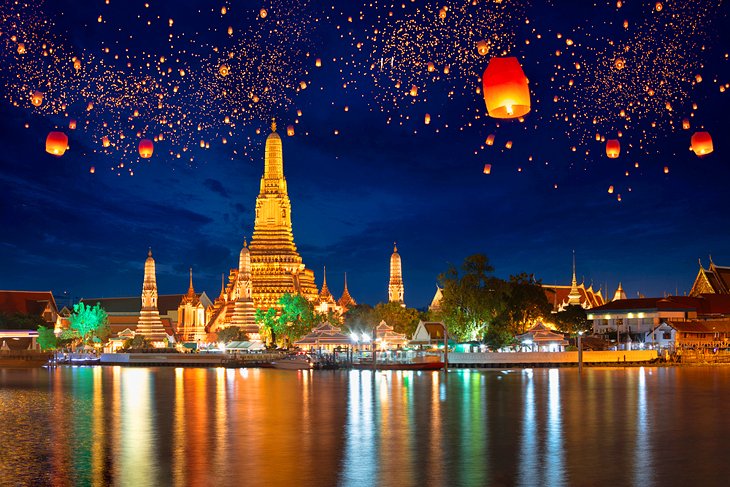
Named in homage to the Hindu god Aruna (who is associated with the rising sun), the "temple of dawn" is much beloved among Thai buddhists. Most of what you see today when you visit, including the temple's stunning prang (a Khmer-style tower), was built in the 1800s, although the temple was originally founded at least 100 years earlier.

The colorful porcelain, tin-glazed pottery, and seashells that cover the prang were added over the years - some designed especially for the temple and others taken from the ballast of boats arriving from China.
The best time to photograph Wat Arun (also known as Wat Arun Ratchawararam) is at dawn, when the sun coming out bounces off the walls of the temple, creating a pearly reflection off the richly decorated structures. A close second is from the Chao Phraya River at any time of the day, when passing by on a small local ferry - you can also catch a boat from Wat Pho Temple and get off at Wat Arun right across the river for stunning views of both temples.
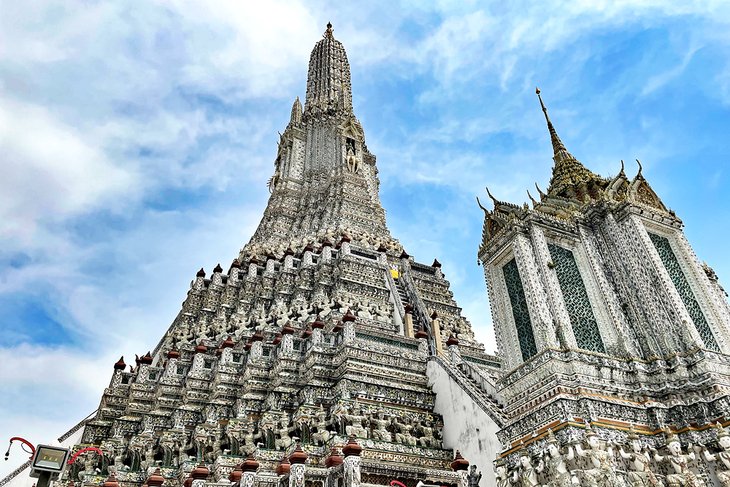
The central prang can be climbed - though the steps are thin and tricky to maneuver - for views over the river, Wat Pho, and across to the eastern bank.
Wat Benchamabophit
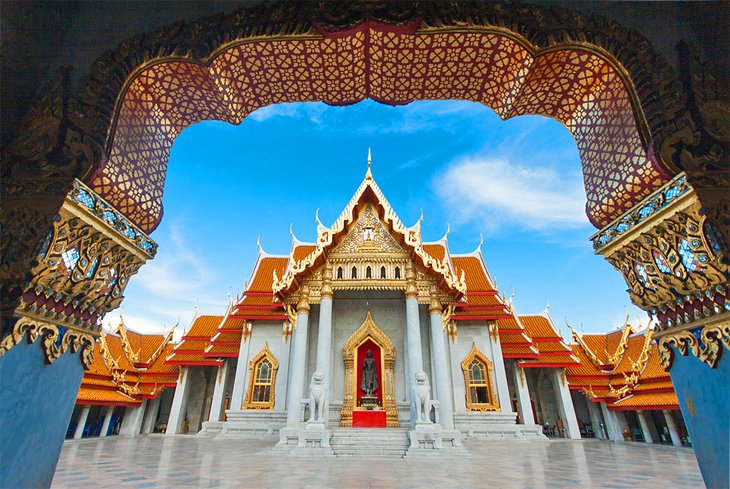
Also known as the marble temple because it is built of Italian marble, Wat Benchamabophit used to be a great temple to visit if you wanted smaller crowds around. After being featured as a stop in the Amazing Race 9, however, the temple became more popular, and foreign tourists are now a common sight here. Still quieter than the Grand Palace and other major wats, Benchamabophit is a stunning gold and red temple that definitely deserves a visit.
Built to match the ornate style of King Chulalongkorn's palace nearby, the temple is a stunning combination of high gables, a marble courtyard, and lacquer and gold details on walls and ceilings. Perhaps the most stunning part of the temple, however, is the 52 Buddha images that surround the assembly hall. Rather than being designed especially for the temple, the statues were collected by King Chulalongkorn and presented to the king as a gift. Each statue sits in a different mudra (pose), showcasing different hand and body sacred postures.
Emerald Temple
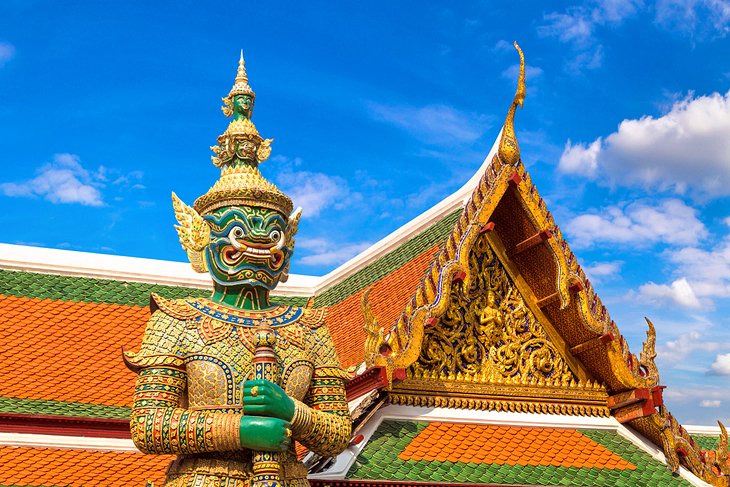
Also known as the Temple of the Emerald Buddha, Wat Phra Kaew is located within the grounds of the Grand Palace.
The temple has been home to Thailand's most important statue, the Emerald Buddha, since the 1700s. While the origins of the statue itself aren't clear, the most accepted story is that back in the 15th century, the small statue was actually hiding inside a larger stucco Buddha statue. When the statue fell down during a storm and became chipped, the monks discovered the Emerald Buddha inside. It wasn't until 200 years later, however, that it was moved to Wat Phra Kaew Temple permanently.
Despite the name, the Emerald Buddha is not made of emerald but instead carved out of a single piece of jade stone. It's about 65 centimeters tall and it is considered the protector of Thailand. Since the statue is sacred, only the king and the crown prince can touch it - three times a year, an elaborate good-fortune ceremony is performed during which the king changes the robes covering the statue.
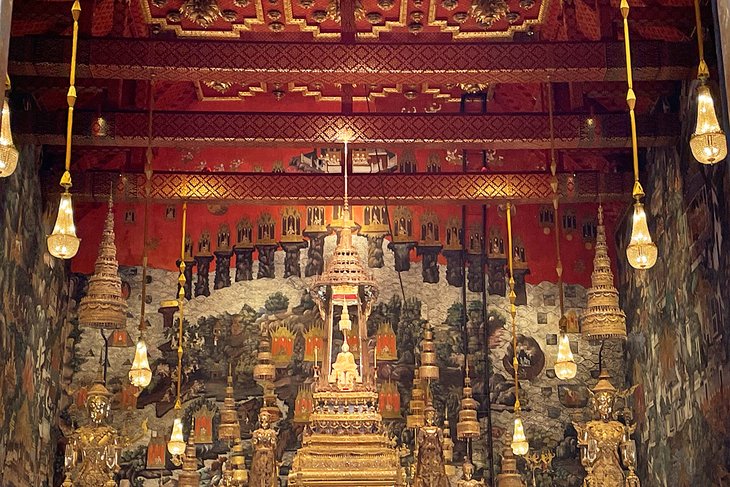
In addition to the hall housing the Emerald Buddha, Wat Phra Kaew also has a number of additional buildings, all decorated in a similar style to what the old Ayutthaya temples used to look like. Marble, mosaics, and colorful orange tiles cover the walls, pillars, and altars that make up the temples here. Just outside the entrance, a pair of giant yakshas (mythical nature spirits) guard the temple.
Wat Saket
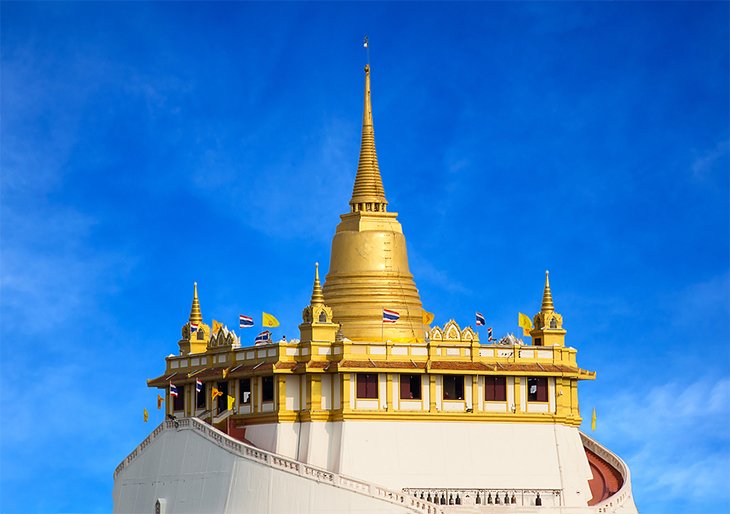
Located at the top of an 80-meter-tall hill in the heart of Bangkok, Wat Saket can only be reached after climbing 300 gold and red steps. From below, the most visible part of the temple is the massive golden chedi (a Buddhist stupa), which contains a relic of the Buddha.
It wasn't until the mid-1900s that much of the concrete and Carrara marble constructions and walls were added, mainly to strop erosion but also to provide protection from the sun and rain. Around the temple, trees and gardens provide a quiet break from the buzzing chaos of the Thai capital.
Wat Saket is particularly famous because of two annual festivals that occur in November. Although both include candlelight prayer and celebration, the Loi Krathong festival is particularly beautiful. During this festival, people release hundreds of little boats (made of banana leaves) with a candle inside into the river as a way of paying respect to water spirits.
Wat Traimit
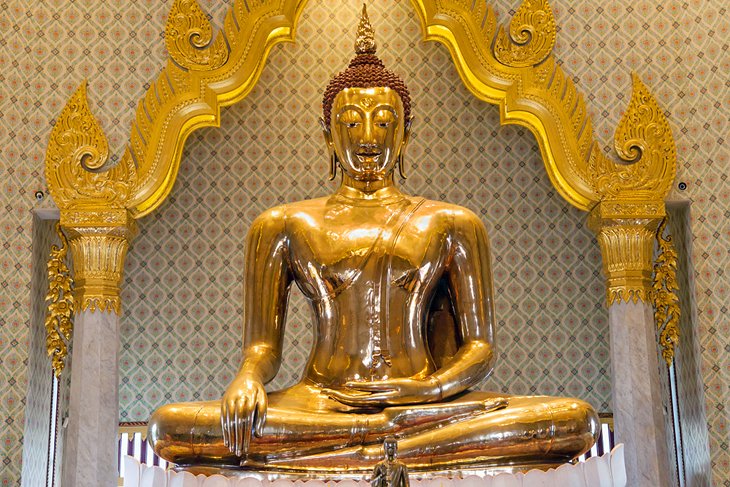
Wat Traimit in Bangkok's Chinatown is a small temple with a big attraction: a 5,500-kilogram statue of a seated Buddha made of gold, valued at over $250 million. The gold statue, which measures three meters in height, dates back to the Sukhothai Dynasty and was probably built around the 13th century.
The Golden Buddha has a similar story to the Emerald Buddha: it was originally covered in stucco to conceal it (and presumably protect it from being stolen) and only re-discovered in 1955 when during a move, the stucco was chipped, revealing the gold underneath.
For those interested in the history of the statue, Wat Traimit actually houses a museum with video presentations and photos explaining the background of the Golden Buddha, its time in Ayutthaya, and what happened once the statue was moved.
Additional museum exhibits focus on the birth of Chinatown and the impact of Chinese traders in the development of Bangkok.
Wat Suwannaram
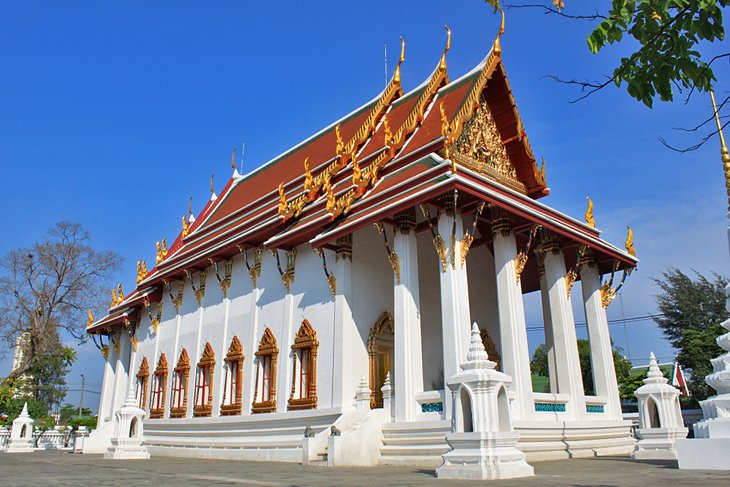
Wat Suwannaram started life as a different temple (Wat Thong), then served as an execution ground during the war with Burma and later as a crematorium for members of the royal family. It wasn't until King Rama I ordered its restoration in the 18th century that the temple became the beautiful structure you see today when you visit.
The temple's most striking features are the giant golden Buddha and the red murals that adorn the walls and ceilings - they have been well-preserved and are just as vibrant as they were when painted centuries ago. The grounds of the temple are perfect for a peaceful walk, feeding some fish, and plenty of unique photo opportunities - including the magical tiny library on stilts that sits in the center of a pond.
Wat Mahathat
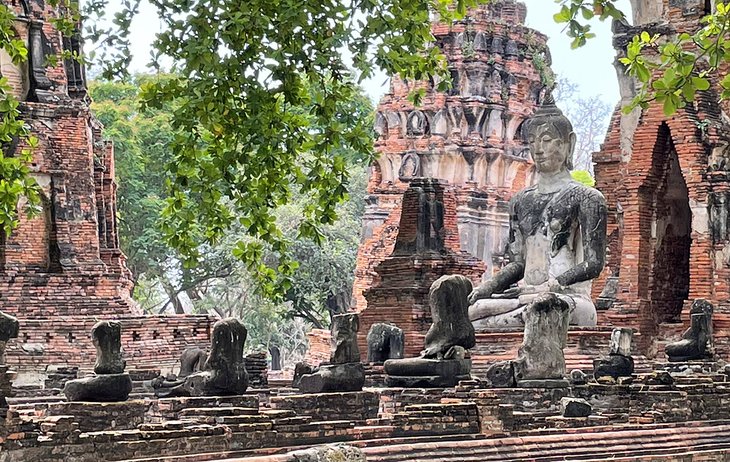
Technically outside Bangkok, Wat Mahathat in the ancient town of Ayutthaya makes for a perfect day trip. The old city of Ayutthaya was the official capital of the country until 1767, when the Burmese Army razed and destroyed much of it. Today, over 50 structures remain in the historical park - some more intact than others - but Wat Mahathat is one of the most visited.
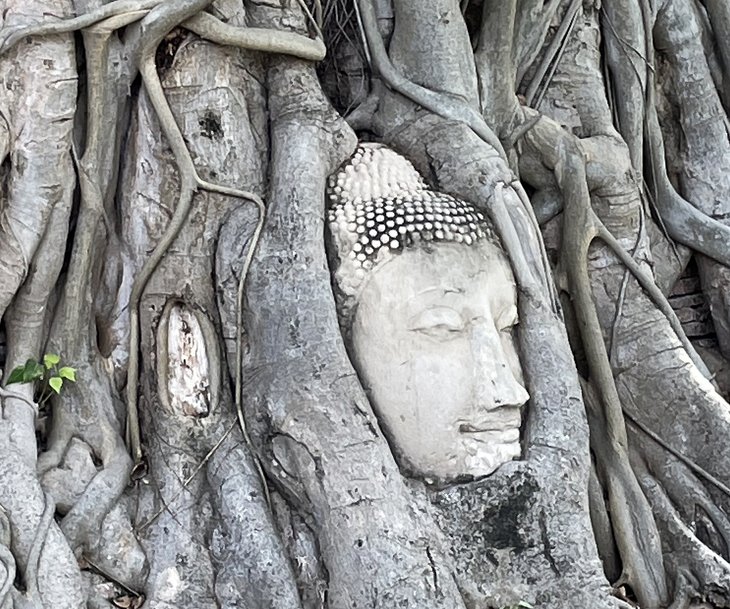
The temple occupies a central location in the 290-hectare historical park and it was probably built around the 14th century. While the main prang (tower) collapsed centuries ago, the towers that remain are still impressive. Originally meant to enshrine Buddha's relics, Wat Mahathat was once one of the most important monasteries in Ayutthaya, a place of reverence where important royal ceremonies were held.
Today, the temple attracts visitors because of the famous Buddha's head embedded into a tree trunk and surrounded by roots.
Read More:
Wat Suthat
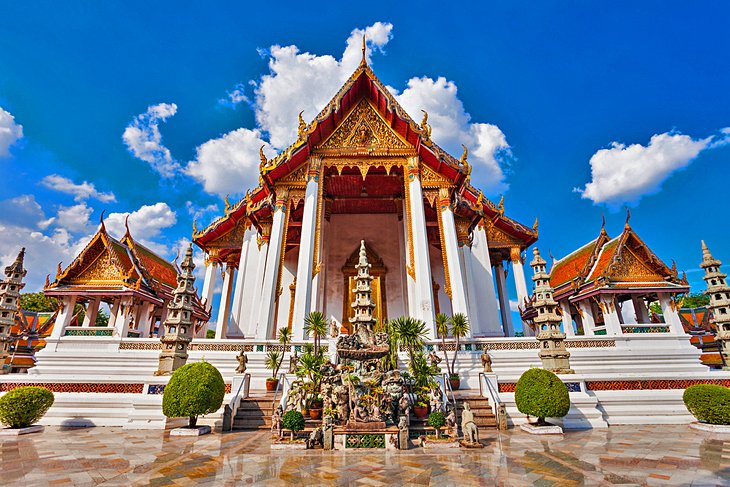
Wat Suthat Thepwararam is an impressive temple in its own right, but it's better known for the giant swing that stands outside. The Sao Ghingcha (unofficially known as the "giant red swing") is 21 meters tall and built entirely of teak wood. The swing has existed in one form or another since 1784, but it had to be reconstructed several times because exposure to the elements deteriorates the wood over the years.
Until 1932, the giant swing was literally a swing – men would ride it by suspending themselves 24 meters up in the air and try to catch a bag of coins with their teeth. That didn't always end up well, and the practice was eventually banned and the swing part removed.
Inside the temple, visitors can see a bronze Buddha statue that comes from the ancient Sukhothai city. The temple's courtyard – even more stunning than the inside of the temple – features 156 Buddha images surrounding the main chapel and lots of hand-carved statues and details embellishing walls and roofs.
Wat Prayoon
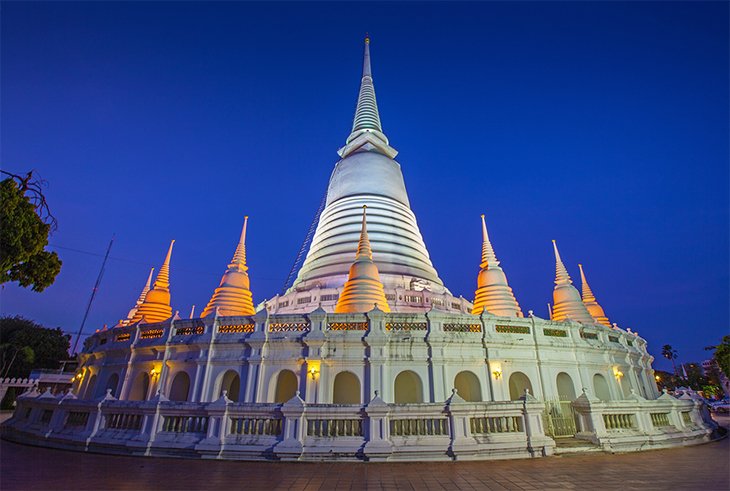
Located just steps away from the temple of dawn and the Chao Praya River, Wat Prayoon is a small white temple surrounded by gardens, a turtle pond, and a number of beautifully decorated buildings, including a wiharn (chapel) and a bot (ordination hall) covered in colorful mosaics.
The most impressive structure here, however, is the Ayutthaya-style white chedi at the back of the complex. The 80-meter-tall, bell-shaped chedi holds Buddha's relics. When the chedi was restored and repainted a bright white in the mid 2000s, construction workers uncovered a number of amulets and statues from the ground underneath – these have been moved to a small museum within the temple grounds.
For a touch of color, don't miss the temple's bright red iron fence. It was built using ancient weapons as the main raw material, and it extends from the entrance gate to the chedi.
Sri Mahamariamman Temple
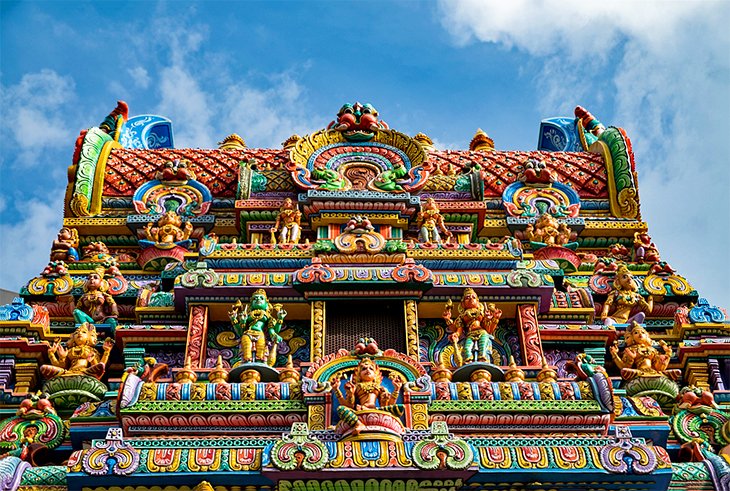
Bangkok's most impressive Hindu temple might not be huge, but it makes up for it with a striking facade of colors and shapes. Built near the end of the 19th-century, Sri Mahamariamman is hard to miss – the main entrance features a six-meter-tall gopura (an ornate gate tower also known as gatehouse) covered in carvings representing different deities.
Inside, the temple features three shrines and a main hall, where statues of all major deities – including Ganesh, Krishna, Shiva, and Vishnu – line up the walls. Visitors who want to pay their respects can buy flower garlands, incense, and fruits or sweets at the many shops on the streets around the temple.
The Navrati festival in November is a colorful event that includes a parade, while Deepavali (or the "festival of lights") turns the temple into a giant lantern, with candles and oil lamps illuminating everything.
Wat Mahathat (Bangok)
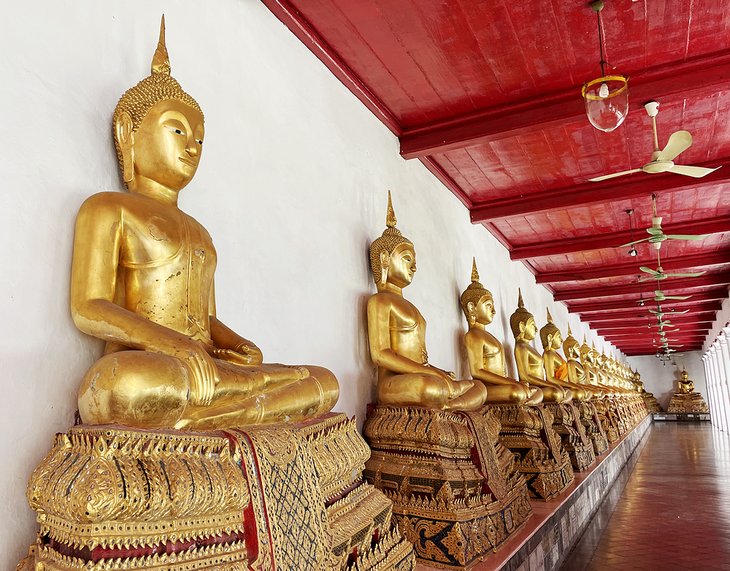
While Ayutthaya has its own Wat Mahathat, a temple of a similar name is also found in the heart of Bangkok's Phra Nakhon district. It was built during the same time as the Ayutthaya period, but at that time it was called Was Salak. The temple is near the Grand Palace, opposite Sanam Luang.
Because of the temple's proximity to the Grand Palace, it became a venue for royal ceremonies, as well as funerals. It is considered to be one of the highest orders of temples in Thailand.
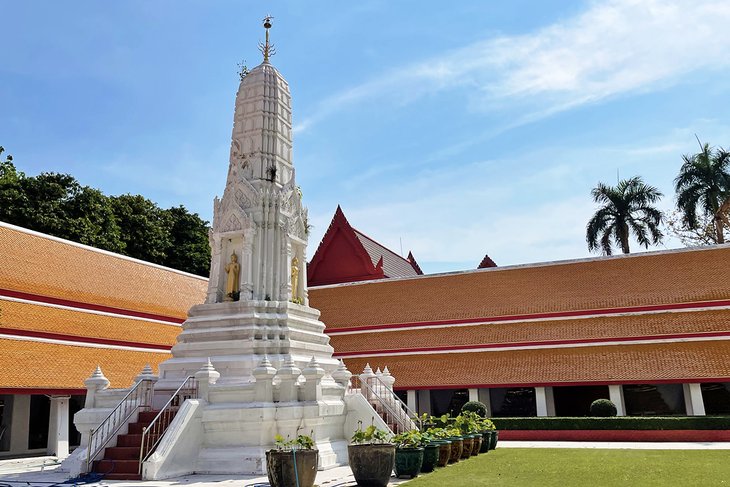
One of the most impressive features of the temple is its collection of Buddha images, both around the central courtyard, as well as in the Vihara.
The temple's ordination hall is the largest in Thailand and can hold roughly 1,000 monks. This temple is also home to the Buddhist Mahachulalongkorn Vajavidyalaya University, which teaches courses in Buddhist studies.
Wat Kalayanamit
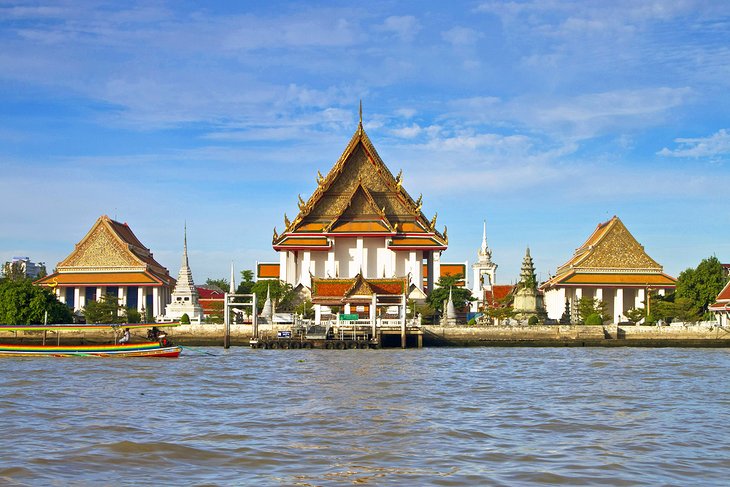
Located across the Chao Phraya on the Thonburi side (directly next to Wat Arun) is What Kalayanamit. It's hard to miss this temple, as it feels rather palatial in size and will take up much of your view as you gaze out across the river.
The temple was built in the 19th century, and its ordination hall is one of the tallest in Thailand. It has to be, actually, as inside is a nearly 50-foot Buddha image – one of the only Buddha statues depicted in the subduing Mara pose, with its left hand lying palm upwards in its lap.
Unlike its neighbors, Wat Arun, and Wat Pho across the river, Wat Kalayanamit is free to enter.
Wat Bowonniwet Vihara
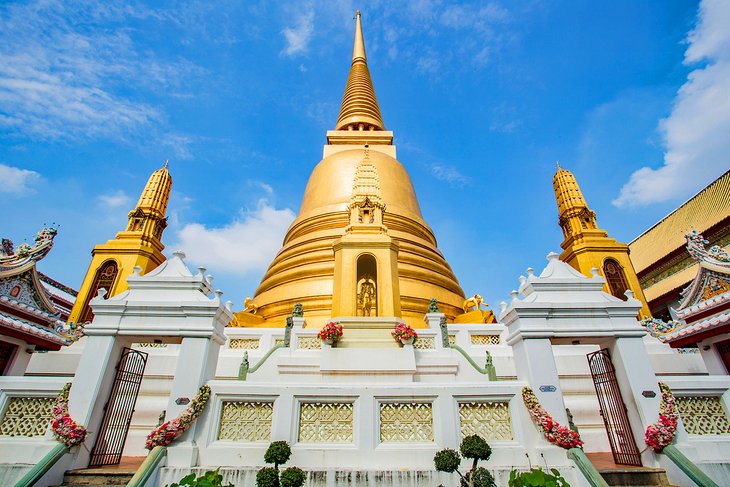
Wat Bowonniwet, or Wat Bowon, was founded in 1824, and is one of the most important Buddhist temples in Bangkok. It is also the final resting place of two former kings: Rama VI and Rama IX.
The temple is known for its majestic 160-foot-tall golden chedi that rises up from its stupa. This is where the ashes of the Thai kings are kept. Wat Bowon also holds a statue of Buddha that dates back to the 14th century.
Originally the temple was called Wat Mai, and it was joined by another temple, Was Rangsi Sutthawat, which was separated by a canal. In 1923, the two merged to become Wat Bowon. The holiest room of the complex is the ordination hall, which has murals from the 19th century that tell the stories of Buddhism.
Address: 248 Phra Sumen Road, Wat Bowon Niwet, Phra Nakhon, Bangkok
More Related Articles on PlanetWare.com
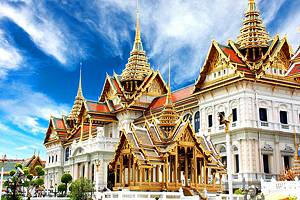
More about Bangkok Temples: Bangkok's Grand Palace is home to some of the most stunning wats, including the Temple of the Emerald Buddha, as well as many halls, prayer rooms, and more. Take a look at our article on Exploring Bangkok's Grand Palace: A Visitor's Guide for tips on how to make the most of your visit to the Grand Palace.
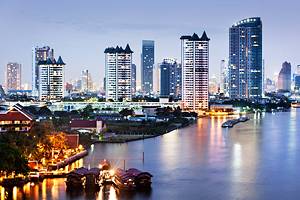
Other Things to Do: Temples might be one of the biggest attractions in Bangkok, but Thailand's capital has much more to offer visitors, including great shopping, huge museums, and stunning outdoor parks. No temple tour is complete without a day trip out to Sukhothai and its many stunning ruins. Check out our piece on the Tourist Attractions in Sukhothai to find out why you should visit.


